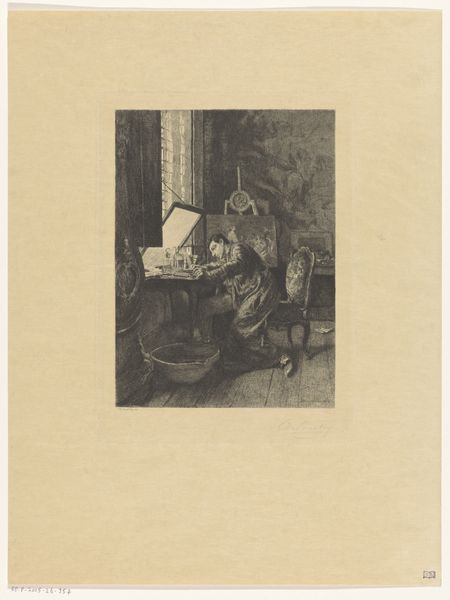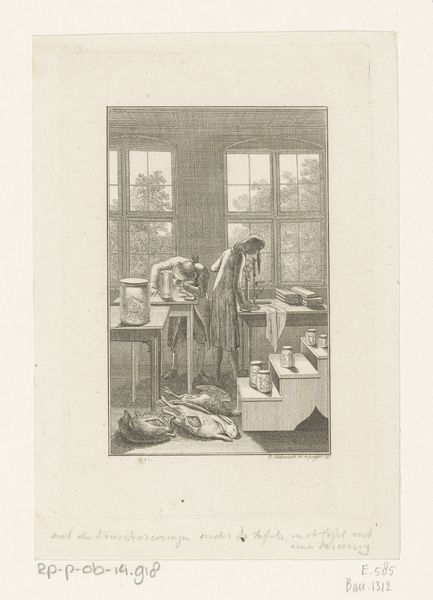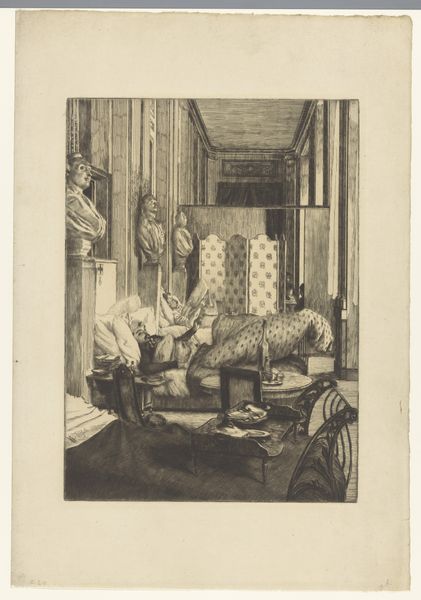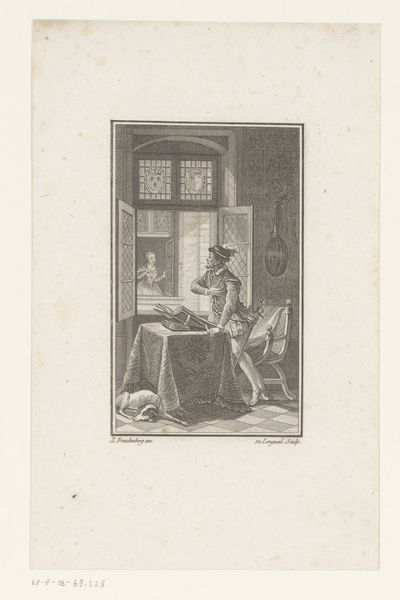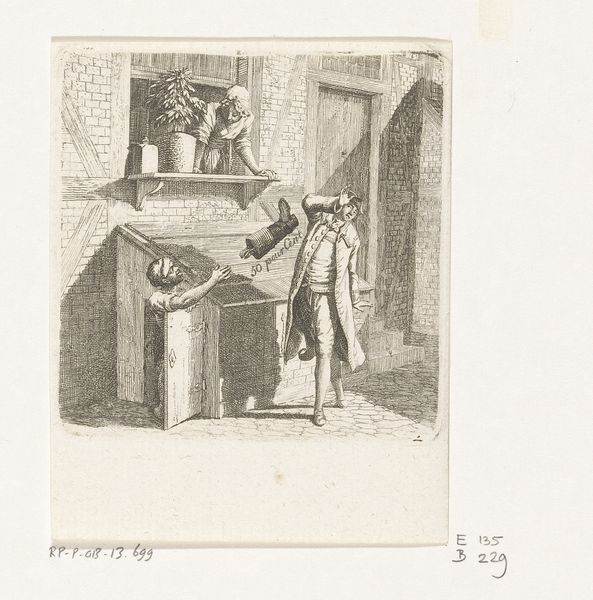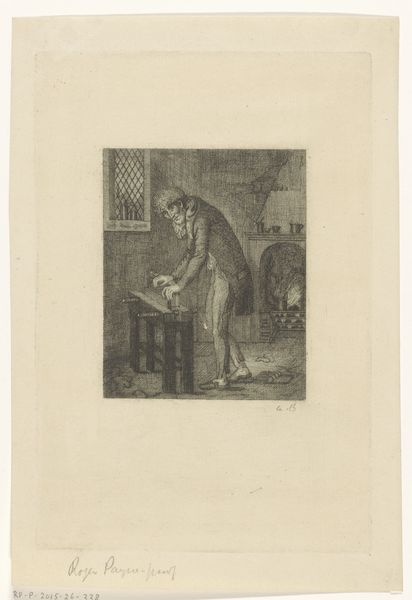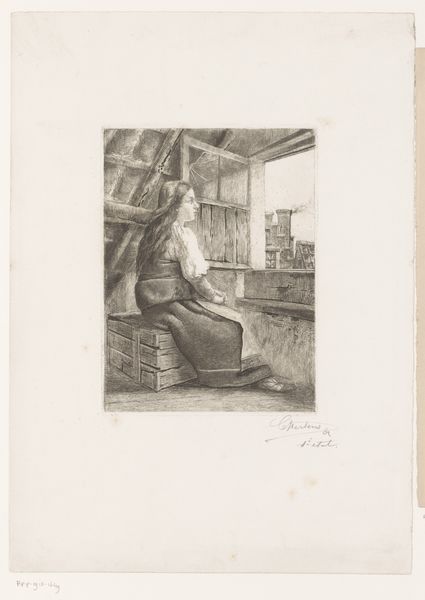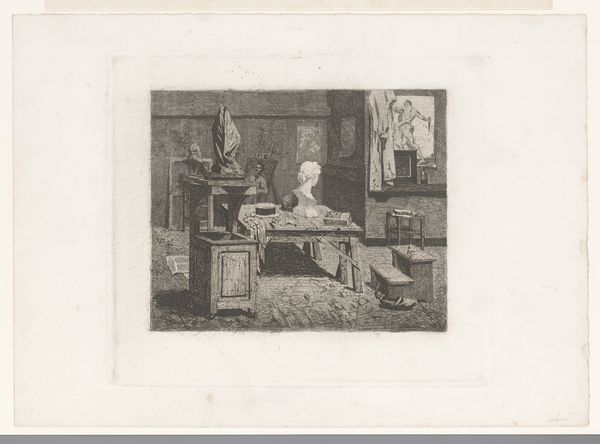
drawing, print, engraving
#
drawing
#
baroque
# print
#
perspective
#
line
#
genre-painting
#
engraving
#
realism
Dimensions: height 177 mm, width 156 mm
Copyright: Rijks Museum: Open Domain
Editor: This is "Atelier van een prentmaker," or "Printmaker's Workshop," created around 1748 by an anonymous artist. It's an engraving, and the detail is amazing! I'm struck by how it meticulously captures all the tools and processes of printmaking. How would you interpret this piece purely from a formal standpoint? Curator: Indeed, the detail is remarkable. Let us consider the image's structure. Observe how the artist has organized the composition to guide our gaze. The linear perspective, rendered meticulously, creates depth, leading our eyes from the foreground’s array of tools towards the seated printmaker. Editor: So, the perspective isn’t just about showing space, but also about directing our attention? Curator: Precisely. The orthogonals converge near the figure at the desk, subtly emphasizing his role. Note also the use of line. Each stroke contributes to the overall form, defining shapes and textures with incredible precision. Is there an inherent quality suggested by the choice of line itself? Is it sharp or soft? Editor: Sharp, definitely sharp. It makes the image feel very precise and almost clinical, even though it's depicting a workshop. It's interesting how that choice affects the overall feeling. Curator: Yes, consider how that linearity affects your sense of the materiality represented. What sense do you get from the surfaces of those forms due to that specific application of line? Think, as well, about the light. Observe how light and shadow are evoked through the density and direction of the engraved lines, creating volume and texture. Editor: It brings out the texture of the stone sculptures in the background. I wouldn't have thought about light so much in an engraving! Curator: The relationship between light and form is essential to understanding visual composition in any medium. Through close examination, we perceive how the artist manipulates these intrinsic qualities to convey a sense of depth, space, and even atmosphere, regardless of the representational qualities within the image. Editor: I see what you mean. By focusing on the lines, light, and perspective, we can understand how the artist created this detailed and captivating scene, regardless of knowing the historical context of printmaking at that time. Thanks for opening my eyes to it. Curator: The pleasure is all mine.
Comments
No comments
Be the first to comment and join the conversation on the ultimate creative platform.



